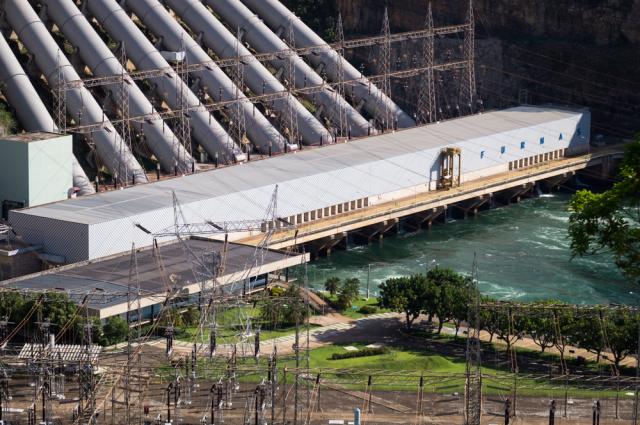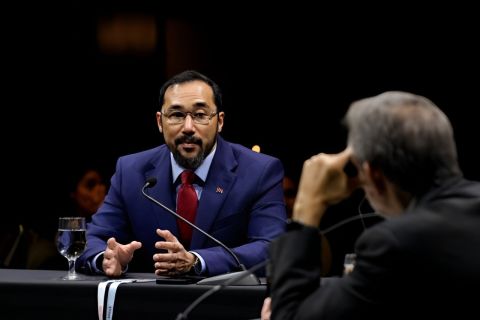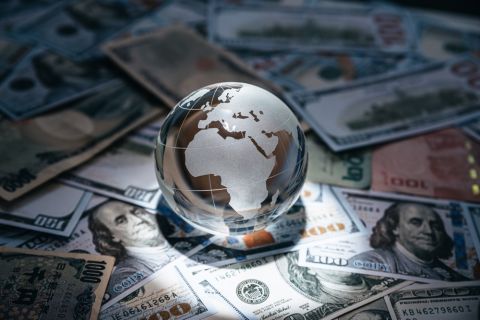
The Furnas Dam hydroelectric power plant is located in Brazil. Hydroelectricity is one of the main sources of renewable energy in the country. (Source: Deni Williams/Shutterstock.com)
RIO DE JANEIRO—Major industries from many sectors in Brazil have been studying the future of low carbon and the potential impacts on their financial results. In fact, many oil majors that operate in Brazilian oil fields have increased investments in renewable energy in parallel to their E&P activities.
Brazil’s state-run Petrobras is among them.
The company has reduced its emissions by 5.9 million tons over the last three years with investments of US$170.8 million in 92 projects, according to data from a study conducted by the Brazilian Business Council for Sustainable Development (CEBDS), a non-profit civil association that promotes sustainable development.
“Petrobras is aligned with the global trend of focusing on renewable energy and has expressed its concern about reducing emissions over the years, promoting improvements in energy efficiency and other projects,” said Marina Grossi, president of CEBDS.
Petrobras has mainly focused on energy efficiency, process optimization and reducing fugitive emissions in the last few years, according to the CEBDS study. The Brazilian operator also replaced natural gas in its refineries with biogas, an initiative that resulted in the reduction of 38,000 ton of CO2.
For Grossi, carbon emissions must be controlled by investing in renewable energy.
Renewable energy sources already account for a significant share of Brazil’s energy mix. Renewable energy in the country accounts for 43.2%, compared to the world average of about 15%. In Brazil, sugarcane and hydroelectricity are the main renewable energy sources, accounting for 17.4% and 11.9%, respectively.
“We have hydropower, wind potential, biomass and solar energy,” Grassi continued. “We have much capacity and potential yet to be developed.”
Brazil also produces about 2.2 million barrels of oil per day. This amount could double in the coming years.
“Investing in ways to capture carbon, energy efficiency, and renewable energy can generate credits that would be cut from this oil production, which still has to last for some years,” Grossi said. “The trend is to have the old economy financing the new economy in an energy transition,” Grossi said.
Grossi said Brazil’s GDP could grow over the next four years. Therefore, the country will see an increasing demand for more energy, since a growing economy and energy consumption are correlated.
“The key issue for the future is to consolidate investments in clean energy sources, reducing the share of fossil fuels, in order to meet the urgent demand for growth, especially if it exceeds the modest projected rate,” Grossi said. “It will be up to the government, in the next four years, to carry out necessary infrastructure projects for the country, guaranteeing the sustainability of the new Brazilian energy matrix.”
However, it is essential to avoid economic growth contributing to an increase in greenhouse gas emissions, she added.
According to CEBDS, Brazilian companies have been investing in measures to reduce their emissions to meet goals set in the Paris Agreement. Thirty-six companies in Brazil have already invested roughly US$21.5 billion between 2015 and 2017 to adapt themselves to meet goals and reduce their emissions. “The main measures are related to improvement in energy efficiency. Specifically in the oil sector we see that companies are preparing for a transition to a low carbon economy and all major oil companies are already investing in renewable energy,” she said.
CEBDS was founded in 1997 by a group of Brazilian entrepreneurs who were aware of the changes and opportunities that sustainability brought. Today it comprises about 60 of the largest business groups in the country, with revenues equivalent to about 45% of Brazil’s GDP and responsible for over 1 million direct jobs. The Brazilian institution also represents the country in the World Business Council for Sustainable Development network.
Recommended Reading
CERAWeek: Trinidad Energy Minister on LNG Restructuring, Venezuelan Gas Supply
2024-03-28 - Stuart Young, Trinidad and Tobago’s Minister of Energy, discussed with Hart Energy at CERAWeek by S&P Global, the restructuring of Atlantic LNG, the geopolitical noise around inking deals with U.S.-sanctioned Venezuela and plans to source gas from Venezuela and Suriname.
US Gulf Coast Heavy Crude Oil Prices Firm as Supplies Tighten
2024-04-10 - Pushing up heavy crude prices are falling oil exports from Mexico, the potential for resumption of sanctions on Venezuelan crude, the imminent startup of a Canadian pipeline and continued output cuts by OPEC+.
Paisie: Economics Edge Out Geopolitics
2024-02-01 - Weakening economic outlooks overpower geopolitical risks in oil pricing.
Exxon’s Payara Hits 220,000 bbl/d Ceiling in Just Three Months
2024-02-05 - ExxonMobil Corp.’s third development offshore Guyana in the Stabroek Block — the Payara project— reached its nameplate production capacity of 220,000 bbl/d in January 2024, less than three months after commencing production and ahead of schedule.
ARC Resources Adds Ex-Chevron Gas Chief to Board, Tallies Divestments
2024-02-11 - Montney Shale producer ARC Resources aims to sign up to 25% of its 1.38 Bcf/d of gas output to long-term LNG contracts for higher-priced sales overseas.





